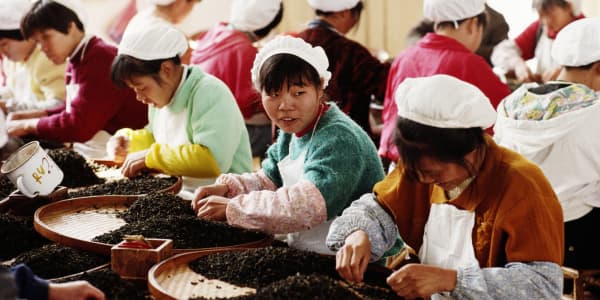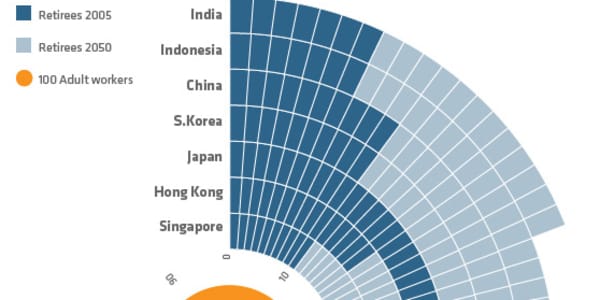South Korea has one of Asia's fastest-growing economies, but one looming roadblock threatens its path to becoming an international powerhouse: a rapidly aging population.
According to a report by the Korea Statistical Office, the number of people aged 65 and above has surpassed 6 million for the first time, accounting for 11.7 percent of the population. What's more, the ratio of senior citizens to working age people – currently 1 to 6 – is projected to shift to 1 to 1.5 by 2050.
"The aging population is one of the most fundamental, structural shifts happening in Korea and affecting the growth prospects for the country," said Wonsik Choi, Senior Partner at McKinsey & Company in Seoul. "Just to give you an example, the working age population in Korea will peak at 37 million in 2016, three years from now and will diminish thereafter," Choi added.
(Read more: Megatrends: The world's aging population)
Korea's fertility rate – the average number of births a woman has in her lifetime – stands at just 1.24, among the lowest in the world. And while Korea currently bears the third-youngest population globally, the OECD estimates that it will have the second oldest population by 2050, right after Japan.
The demographic shift in population structure is expected to be an economic headache for Seoul, which will likely see a slowdown in the growth of its labor force.

Savoring the "Sweet Spot"
But some economists argue that Korea merely faces a transitional period, stating that the country is benefiting from a demographic "sweet spot", which will ultimately result in a sizable build-up of net financial wealth.
"The age structure of the population strongly suggests that over the next five years Korea will benefit from a demographic sweet spot – one in which the working age population (the 15-64 age cohort) expands, while at the same time falling fertility rates lower child dependency, but before old age dependency starts to rise significantly," Nomura said in a report.
(Read more: Bank of Korea cuts growth outlook, eyes US impasse)
"As a result, we expect Korea to build up sizable financial wealth, given that in economic theory the saving rate tends to be higher than the investment rate when an economy finds itself in such a demographic sweet spot – Korea's total dependency ratio is at its lowest level in its history," it added.
"From a current account perspective, aging is good. The aging population is positive for savings, that's why Korea has a current account surplus," explained Young Sun Kwon, Senior Economist & Managing Director for Asia ex-Japan at Nomura International in Hong Kong.
Kwon notes that the elderly population's tendency to save more boosts capital investment growth as household savings are the main source of funds for investment.
The Future of Korea
So just how big of an issue is the diminishing of youth from Korea's general population?
A report from Nomura says its "sweet spot" will only last until 2016, after which, the country will face headwinds from its aging society.
(Read more: Can Korea keep its 'morning calm' amid the selloff?)
"The ability to seize this window of opportunity is not automatic, and Korea's demographic sweet spot will only last until 2016, after which the country will face headwinds from an ageing society as the old-age dependency rate starts to rise sharply and significantly," the Nomura report said.
"If Korea fails to capitalize on the released resources and fails to harness this demographic sweet spot effectively, it faces the prospect of having to deal with renewed pressures from a much weaker position. Korea's population growth rate is set to start falling below zero in 2018," it added.
Kwon emphasizes that while an aging population is good for savings, it may not necessarily be good for domestic demand. For economic growth, a younger population is better, he says.
For now, the secret to sustaining Korea's growth potential could just lie in increasing its labor participation. The Bank of Korea's Kim agrees to that. "Unless we make our population young, we're likely to lose economic dividend, which has contributed to Korea's growth in the past. We should find more opportunities for women and the elderly to remain in the labor market to participate in the market further."
(Read more: South Korea central bank holds rates, as expected)
Still, with household debt levels among the highest in Asia as the young spend more than they can afford to, even the growth drive from a younger population would not be without risks.




